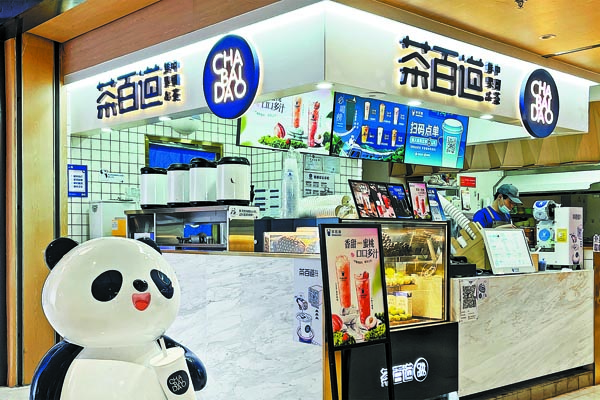

Domestic and international coffee brands have also been expanding in the past couple of years, with new products continuously being launched that feature Chinese tea or other Chinese cultural elements.
By the end of January, homegrown brand Luckin Coffee had over 8,000 stores in China. Meanwhile, Starbucks currently has over 6,000 branches and its expansion continues, as it plans to reach 9,000 stores by the end of 2025.
From coconut cold brew to milk tea and peach oolong, Canadian coffee chain Tim Hortons aims to launch localized drinks in the Chinese market.
In January, the coffee chain launched its official Chinese name, "Tianhao", to accelerate its localization. Tianhao can mean "the weather is good", which has a poetic implication and is often seen in ancient Chinese poems.
Lu Yongchen, CEO of Tim Hortons China, says, "We have seen the rise of China's coffee consumption market and personally experienced the continuous improvement of the business environment and the government's strong support for business development.
"In the future, we will continue to expand in China," Lu says. With over 500 stores across China as of October, Tim Hortons China aims to expand to 2,750 stores by 2026.
Chabaidao's signature tea drinks, which combine fresh seasonal fruit with traditional tea and milk tea with taro balls, are quite popular among young customers, with the latter accounting for over 270,000 orders during the Lunar New Year holiday.
Zhu Mingxing, director of product research and development of Chabaidao, told Xinhua News Agency that they value the tea base of their drinks, and make sure customers can taste the tea flavor, but without acerbity.
"We have a high standard for the quality of the tea leaves, which is usually influenced by region or weather. We make sure different batches of tea leaves are consistent in shape, color and aroma," Zhu says.
Besides the major tea categories, some niche teas such as Liubaocha, Yashixiang and Baiyaqilan have also found their way to the menus of cafes and new-style tea stores.